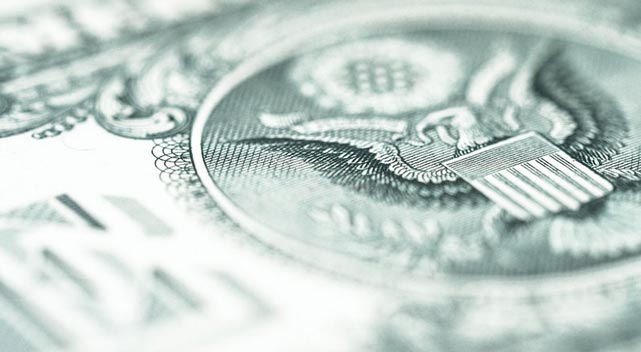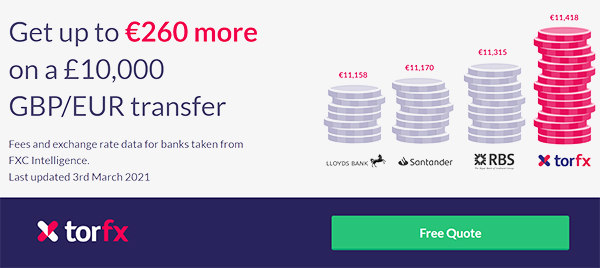Pound Sterling to Dollar Forecast: GBP/USD Eyes Bullish Break Amid Fed Speculation
- Written by
James Fuller

The Pound to Dollar exchange rate forecasts improved midweek as GBP/USD climbed to a one-month high near 1.3590, buoyed by stronger UK GDP data and persistent weakness in the US dollar. Sterling buyers are now assessing whether the British currency can overcome key resistance at 1.3620, opening the door to multi-year highs.
The US dollar has remained under pressure in global markets as expectations for Federal Reserve interest rate cuts continue to build. Meanwhile, the latest UK GDP figures have underpinned the pound to dollar exchange rate, despite lingering concerns over the underlying data.
A relatively calm global backdrop is also helping to underpin pound sterling.
Danske Bank noted: “The low-volatility, risk-on environment remains intact, with Treasury yields declining, equities advancing, and the USD weakening.”
The GBP/USD exchange rate posted steady gains on Wednesday, reaching a one-month peak of 1.3590 after the GDP release before consolidating just below that level.
According to UoB: “Strong momentum is likely to outweigh the overbought conditions, and GBP may test the major resistance at 1.3620 today. It remains to be seen if it can break and hold above this level.”
Scotiabank also highlighted that important resistance lies close to 1.3620. Any clear break above this could increase speculation of a move towards 41-month highs near 1.3800.

GBP/USD forecast factors remain centred on both US and UK developments, alongside key geopolitical events. ING observed: “The proximity to tomorrow’s Trump-Putin meeting might argue against adding much more USD shorts just yet. But the bias remains unequivocally negative for the greenback.”
The UK economy recorded 0.4% GDP growth in June, beating forecasts of 0.2% and reversing a 0.1% contraction in May. The second quarter as a whole saw 0.3% growth compared with expectations of just 0.1%.
ING said: “At face value, the UK's 0.3% second-quarter growth performance looks reasonable amid a flurry of global and domestic headwinds. But this is largely concentrated in components not intrinsically linked to underlying economic performance.”
They added: “We certainly expect the GDP figures in the second half of the year to have a weaker flavour to them. The jobs market is under pressure; payrolled employment has fallen in eight out of the last nine months. Investment intentions are lower, too. And despite the UK-US trade deal, the much bigger issue for UK firms is the uncertainty surrounding the global economic outlook caused by tariffs.”
The dollar’s weakness has been compounded by growing expectations for aggressive Fed rate cuts. In September, the focus is no longer on whether the Fed will cut, but by how much.
There has been increased lobbying for a 50-basis-point cut from Treasury Secretary Bessent, with the Administration also pressing for a more aggressive easing path.
Bessent stated: “I think we could go in series of rate cuts here, starting with a 50bps cut in September. If you look at any model it suggests that we should probably be 150, 175 basis points lower.”

Scotiabank commented: “Investors are forced to ponder implications for Fed independence, US data integrity and whether, even with inflation sticky around 3% still, the Fed might proceed with a (perhaps aggressive?) rate cut in September anyway.”
STORY LINK Pound Sterling to Dollar Forecast: GBP/USD Eyes Bullish Break Amid Fed Speculation

The Pound to Dollar exchange rate forecasts improved midweek as GBP/USD climbed to a one-month high near 1.3590, buoyed by stronger UK GDP data and persistent weakness in the US dollar. Sterling buyers are now assessing whether the British currency can overcome key resistance at 1.3620, opening the door to multi-year highs.
The US dollar has remained under pressure in global markets as expectations for Federal Reserve interest rate cuts continue to build. Meanwhile, the latest UK GDP figures have underpinned the pound to dollar exchange rate, despite lingering concerns over the underlying data.
A relatively calm global backdrop is also helping to underpin pound sterling.
Danske Bank noted: “The low-volatility, risk-on environment remains intact, with Treasury yields declining, equities advancing, and the USD weakening.”
The GBP/USD exchange rate posted steady gains on Wednesday, reaching a one-month peak of 1.3590 after the GDP release before consolidating just below that level.
According to UoB: “Strong momentum is likely to outweigh the overbought conditions, and GBP may test the major resistance at 1.3620 today. It remains to be seen if it can break and hold above this level.”
Scotiabank also highlighted that important resistance lies close to 1.3620. Any clear break above this could increase speculation of a move towards 41-month highs near 1.3800.

GBP/USD forecast factors remain centred on both US and UK developments, alongside key geopolitical events. ING observed: “The proximity to tomorrow’s Trump-Putin meeting might argue against adding much more USD shorts just yet. But the bias remains unequivocally negative for the greenback.”
The UK economy recorded 0.4% GDP growth in June, beating forecasts of 0.2% and reversing a 0.1% contraction in May. The second quarter as a whole saw 0.3% growth compared with expectations of just 0.1%.
ING said: “At face value, the UK's 0.3% second-quarter growth performance looks reasonable amid a flurry of global and domestic headwinds. But this is largely concentrated in components not intrinsically linked to underlying economic performance.”
They added: “We certainly expect the GDP figures in the second half of the year to have a weaker flavour to them. The jobs market is under pressure; payrolled employment has fallen in eight out of the last nine months. Investment intentions are lower, too. And despite the UK-US trade deal, the much bigger issue for UK firms is the uncertainty surrounding the global economic outlook caused by tariffs.”
The dollar’s weakness has been compounded by growing expectations for aggressive Fed rate cuts. In September, the focus is no longer on whether the Fed will cut, but by how much.
There has been increased lobbying for a 50-basis-point cut from Treasury Secretary Bessent, with the Administration also pressing for a more aggressive easing path.
Bessent stated: “I think we could go in series of rate cuts here, starting with a 50bps cut in September. If you look at any model it suggests that we should probably be 150, 175 basis points lower.”

Scotiabank commented: “Investors are forced to ponder implications for Fed independence, US data integrity and whether, even with inflation sticky around 3% still, the Fed might proceed with a (perhaps aggressive?) rate cut in September anyway.”
International Money Transfer? Ask our resident FX expert a money transfer question or try John's new, free, no-obligation personal service! ,where he helps every step of the way, ensuring you get the best exchange rates on your currency requirements.
TAGS: Pound Dollar Forecasts
Comments are currrently disabled
Related Stories:
- Pound Sterling Forecast for "Mixed" Performance Against Euro and Dollar - August 15, 2025
- Pound Sterling to Dollar Forecast: GBP/USD Eyes Bullish Break Amid Fed Speculation - August 15, 2025
- GBP/USD Forecast: Pound Sterling Softens on Robust US PPI - August 14, 2025
- Pound to Dollar Mid-Week Forecast: 1.3500 Support and 1.3620 Resistance - August 13, 2025
- Pound-to-Dollar Forecast: Sterling at 20-Day Best on Fed, Data Jitters - August 13, 2025
- Pound to Dollar Forecast: "Little Resistance Ahead of Upper 1.35 Area" - August 13, 2025
- GBP/USD Forecast: Pound Sterling Extends Gains after US Inflation Disappoints - August 12, 2025
- Pound Sterling to Dollar Forecast: Investment Banks Broadly Positive on GBP - August 11, 2025
- Pound to Dollar Price News, Forecast: GBP Firm Ahead of Key US and UK Data - August 11, 2025
Latest News:
- Pound Sterling Forecast for "Mixed" Performance Against Euro and Dollar - August 15, 2025
- Euro to Dollar Forecast: "Fed Rate Outlook" to Lift EUR/USD - August 15, 2025
- Pound Sterling to Dollar Forecast: GBP/USD Eyes Bullish Break Amid Fed Speculation - August 15, 2025
- British Pound-to-Euro Strikes Five-Week Best following UK GDP - August 14, 2025
- GBP/USD Forecast: Pound Sterling Softens on Robust US PPI - August 14, 2025
- Pound Sterling Firms as UK GDP Beats Forecasts - August 14, 2025
- Pound-to-Euro Forecast: Break Out After UK GDP Surprise - August 14, 2025
- Euro to Dollar Forecast: 1.1780 in Focus as Buyers Push Higher - August 14, 2025
- Pound to Dollar Mid-Week Forecast: 1.3500 Support and 1.3620 Resistance - August 13, 2025
- British Pound to Euro Holds €1.15, UK GDP Incoming - August 13, 2025








